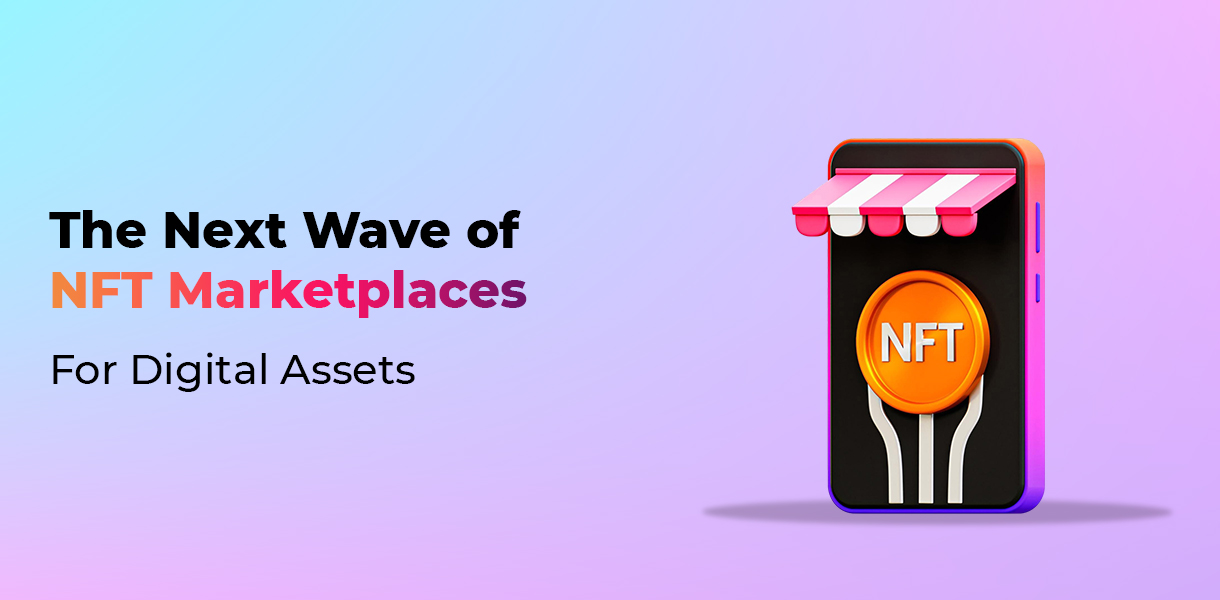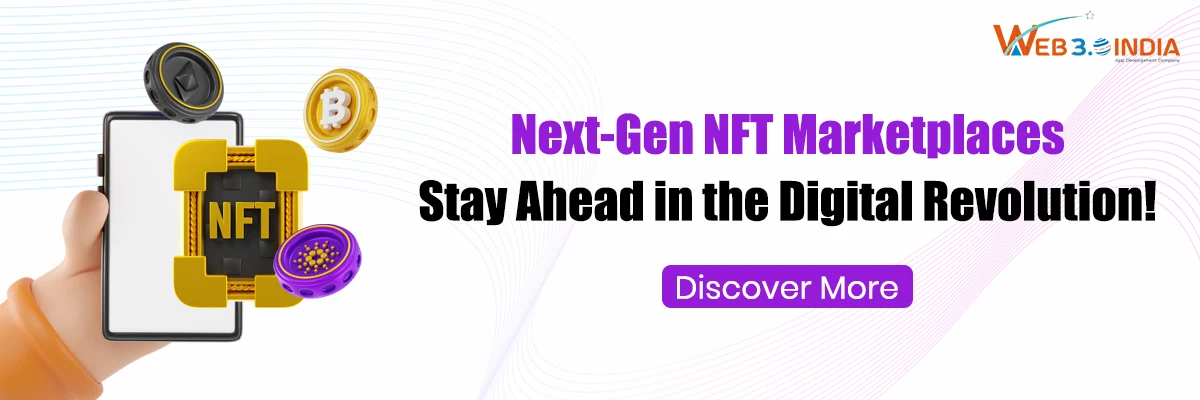The Next Wave of

The blockchain has become the backbone of the entire decentralized world. It makes every transaction immutable, allowing the emergence of a digital economy. Cryptocurrencies and tokens were the preliminary assets that facilitated online marketplaces. However, these are identical and can be swapped from one form to another. In other words, you can buy or sell cryptocurrencies on different marketplaces. They do not have unique identities, and hence cannot be used to exercise ownership.
Then came NFTs, or Non-Fungible Tokens. These paved the way for users to gain complete ownership over their digital assets. Unlike crypto tokens, they are unique or one-of-a-kind. No two NFTs will have the same digital signature or form. Hence, they have become a great way for users to control their digital assets and maintain their holdings. Besides, NFTs have already transformed how digital arts and collectibles are traded. With this being said, we have explored the current landscape of NFT marketplaces below.
Current Landscape of NFT Marketplaces
NFTs in Arts and Collectibles
Currently, numerous NFT marketplacess have come into existence. Users are actively becoming a part of this community. Although NFTs are digital tokens, they greatly differ from cryptocurrencies. Their unique signatures and identities make them valuable in the digital art market. According to the current landscape, NFTs are used vastly to gain ownership of digital art pieces and collectibles.
To explain this further, we have listed a few ways NFT marketplaces have revolutionized the art industry.
Value and Scarcity
NFTs are unique. They cannot be duplicated. In other words, you won’t be able to make endless copies of the tokens. Hence, people use them to represent digital art pieces. Thanks to their scarcity in the decentralized ecosystem, NFTs add more value to art pieces and collectibles.
Provenance and Ownership
Previously, digital art used to be copied and sold out. As a result, artists and owners failed to exercise copyrights. However, with the introduction of NFTs, this has been stopped. Non-fungible tokens provide verifiable ownership of different art pieces on the blockchain ledger. They also allow owners to authenticate the origin and history of their owned art pieces with ease.
Empowerment of Artists
Several NFT marketplaces have contributed to the growth of artists across the world. For instance:
- Artists can use these platforms to sell their art directly to buyers. No galleries or intermediary community will be needed.
- Smart contracts can be designed to facilitate royalty payments. This way artists will receive a commission every time their art is resold.
- NFTs have monetized creativity. Artists can gain incentives by creating limited-edition art on platforms like Rarible and OpenSea.
Limitations of Current Use Cases
Although NFT marketplaces have gained significant recognition, there are limitations. These platforms are completely inclined towards digital arts and collectibles. According to the current scenario, NFTs can be used to represent digital art, like painting and other forms of collectibles. This has put a constraint on their true potential. It’s important to move beyond this use case. NFTs can also be integrated for other purposes, like the real estate industry and the gaming market.
Expanding Use Cases of NFTs
NFTs are extremely valuable and rewarding. Their unique nature allows them to be used for validating ownership. That’s why they can be used for representing different types of assets and entities. Below we have explained some of the expanding use cases of NFTs.
NFTs in Digital Assets
- Intellectual property owners can tokenize their ownership rights on NFT marketplaces. This will help them retain complete control over their IP rights throughout.
- Users can purchase or sell virtual lands in the metaverse ecosystem. NFTs will be used to validate the authenticity of the ownership.
- Domain names can also be purchased using NFTs. This will help users build and deploy permissionless and censor-resistant websites.
- NFTs can be used to identify digital asset owners in the metaverse world. As a result, no one will be able to falsify their identity and claim rights on any digital asset.
NFTs in Gaming
- Several in-game assets like weapons and accessories can be purchased using NFTs. This way gamers will have complete ownership of the assets for a lifetime.
- Character skins can also be purchased through NFT marketplaces. These skins will be unique and won’t have any duplicates. Hence, gamers will have unique characters to represent themselves in the metaverse games.
- Traditional in-game assets cannot be used outside the particular games. However, if they are represented using NFTs, interoperability will be possible. That’s because NFTs operate independently on the blockchain. These tokens do not follow the traditional restrictions.
- Also, one player can sell an in-game asset to another player involved in a different game. NFTs can boost inter-gaming economics greatly by increasing asset liquidity.
NFTs for Real-World Assets
- Tangible assets like luxury items can be tokenized on NFT marketplaces. This will give users the sole ownership of their assets.
- NFTs can also be used to tokenize real estate properties. It will increase transparency and traceability across the entire real estate market.
- NFTs will pave the way for having fractional ownership. It is a concept that supports multiple people to gain ownership of a single tangible asset.
NFTs in Tickets and Memberships
- NFTs can also be used to purchase tickets for different events.
- People can earn subscriptions with exclusive rights on different NFT marketplaces.
- Starbucks rewards its customers with digital collectibles on special events through NFTs. Nike allows its customers to use NFTs to purchase virtual apparel and sneakers.
The Future of NFT Marketplaces
NFTs combined with other advanced technologies will open up numerous possibilities. Exploring the future of the NFT marketplaces has become imminent for many aspiring users.
Transition to Multi-Use Platforms
NFTs can be integrated with multiple platforms for tokenizing different forms of assets. The marketplaces won’t be restricted to digital art and collectibles only. Rather, we may see real estate listings and gaming characters being bought and sold on these marketplaces. Apart from this, Web3 integration will pave the way for enhanced user experience.
Collaboration Across Industries
Mainstream adoption is likely to gain immense popularity in the coming days. Businesses will be able to leverage NFT marketplaces to bring a shift from Web2 to Web3. Also, industries can partner with NFT marketplaces to provide an immersive digital experience to their users. For instance, retail businesses can offer digital rewards in the form of NFTs during promotional events.
Predictions for the Next Decade
Some of the major predictions of the NFT marketplaces are:
- Marketplaces will soon start operating on multiple blockchains. Such cross-chain interoperability will increase asset liquidity. It will also facilitate seamless trade between different networks without any constraint.
- Fractional NFTs will allow smaller investors to gain sole property rights. This will make NFT marketplaces more affordable with higher liquidity rates.
- DAO-based marketplaces may soon replace centralized platforms. These are likely to have lower transaction costs and more user control.
- NFTs can also support passive economics in the decentralized ecosystem. In other words, users can borrow or lend NFTs to one another easily. Collateral loans and NFT-based leases might become popular financial rails in the coming years.

Conclusion
It is indeed true that NFT marketplaces have gained immense popularity in the DeFi ecosystem. Users are using these tokens to gain ownership of digital art and collectibles. In the coming years, Web 3.0 India envisions integrating NFTs with other forms of assets, including gaming characters, in-game assets, real estate properties, metaverse lands, and even exclusive memberships.